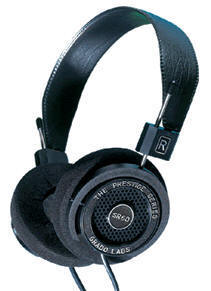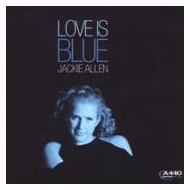You are reading the older HTML site
Positive Feedback ISSUE
17
january/february 2005
grado
SR60s headphones
as reviewed by Ed Kobesky

|
ED KOBESKY'S SYSTEM
LOUDSPEAKERS
ELECTRONICS
SOURCES
CABLES
ACCESSORIES |
My first pair of "real" headphones were Grado SR60s. Then as now, they were priced at a reasonable $69. Sure, they looked funny, and the foam earpads made my ears itch, but they were easily driven by the headphone jack on my undistinguished Pioneer Elite Pro Logic receiver. They also opened my ears to the sonic possibilities of headphone listening at a time when, let's face it, many of us were buying either ruthlessly revealing studio monitors or chain-store garbage.
Now, eight or nine years later, I've tried many other headphones. Some were good (Sennheiser HD535s, Sony MDR-7506s). One was bad (Sony's MDR-V300s). Others were superlative (Beyerdynamic DT880s, Sennheiser DH565 Ovations and HD580 Precisions). I traded the Grado SR60s for two things: the promise of better, more detailed sound and improved comfort. The question is, did I get either? Or could I have saved myself nearly $2000 by simply sticking with the SR60s?
For $69, I didn't bother to request a review sample from Grado. While on vacation, I poked my head into a hi-fi shop and grabbed a pair to enjoy in my hotel room with a Sony CD Walkman. Guess what? The SR60s are more comfortable than I remembered. The foam ear pads seem softer than the unyielding cushions on the older model. The SR60s are convenient, too. I'd forgotten how they fold flat for storage at the bottom of a suitcase or gym bag. I'd also forgotten how musically satisfying this deceptively simple pair of headphones could be.
"Deceptively simple" are key words with the SR60s. Their design (explained at www.gradolabs.com) is well thought out and quite sophisticated. The cables and connectors are of very high quality. However, judging strictly by their odd appearance and otherwise tactile feel, $69 is an appropriate price point. This is probably why, years after their introduction, they still retail for the same price. However, if you want to talk sound per dollar, the SR60s are actually worth quite a bit more. The fact that Grado sells a ton of them probably helps to keep them affordable.
The SR60s are affordable in another way—I did not need a headphone amp to enjoy 95% of their potential. With other high-quality phones, you may get 75% or 85% without an amp. That should be more than sufficient for musical satisfaction, but you'll always know that much more is possible. You won't have to worry with the SR60s. I tried them with the excellent HeadRoom Little, and the improvements were minor. They had slightly tighter but not fuller bass, more detailed highs, and the backgrounds were a teeny tiny bit blacker. The HeadRoom Little's crossfeed processor made for a less fatiguing listening experience. If you plan to primarily listen through headphones, it's almost a necessity, but most part-timers will find the SR60s non-constricting. In fact, they equaled my Sennheiser HD580s in terms of openness. My advice? Buy the SR60s, plug them into whatever headphone socket you have, and enjoy. The better the circuit, the better the sound, but only to a point. Any mass-market receiver should suffice. My Denon DRA-395 receiver did a fine job, and my NAD 3400 integrated amp was even better.
 Does their unfussy nature mean that the
SR60s are low-resolution? Far from it. High-sensitivity drivers see to
that. On America's Sweetheart, from perennial bad girl Courtney Love
(Virgin 91459), you'll clearly hear all of the studio patchwork,
including some instant-on tape hiss as Love's vocal track is dubbed over
digital-quiet instrumental tracks. On Paul Westerberg's Come Feel Me
Tremble (Vagrant 387), the same haphazard recording and mixing work is
purposely left uncorrected and unconcealed, yet rather than being
distracting, it's easily ignored. If you want to hear nastiness with the
Grados, you will. If you'd rather concentrate on the music, they'll let
you do that, too. They're neither dull nor excruciatingly detailed. They
show a lot of finesse for $69.
Does their unfussy nature mean that the
SR60s are low-resolution? Far from it. High-sensitivity drivers see to
that. On America's Sweetheart, from perennial bad girl Courtney Love
(Virgin 91459), you'll clearly hear all of the studio patchwork,
including some instant-on tape hiss as Love's vocal track is dubbed over
digital-quiet instrumental tracks. On Paul Westerberg's Come Feel Me
Tremble (Vagrant 387), the same haphazard recording and mixing work is
purposely left uncorrected and unconcealed, yet rather than being
distracting, it's easily ignored. If you want to hear nastiness with the
Grados, you will. If you'd rather concentrate on the music, they'll let
you do that, too. They're neither dull nor excruciatingly detailed. They
show a lot of finesse for $69.
Grado's 15-foot extension cable ($40) noticeably dulled the sound, but didn't affect my enjoyment of the SR60s one iota. I might have been tempted to string two together for extra-long reach if I didn't already have a headphone output in nearly every room of my house.
Another advantage of the Grados is that they handle nearly all musical genres with aplomb. I find my Sennheiser HD580s best suited to jazz and classical, and my Sony MDR-7506s seem cut out only for bass-heavy pop and dance tracks, but the SR60s groove to anything. They're killer with rock, spacious and timbrally accurate with acoustic folk and jazz, and—though a bit bass-shy—they'll probably satisfy even the most bass-addicted hip-hop or trance fan. It's not that the bass isn't there. It is. It just doesn't have the same impact that it does with more expensive cans.
The SR60s' open design doesn't offer the same isolation as sealed cans. Pink Floyd fans who like to shut out the world (and "breathe in the air," if you know what I mean) may not feel as satisfactorily cosseted as they would with, say, a pair of Sennheiser HD280s. I prefer the added spaciousness of the SR60s. The downside is that (a) they leak sound, making them unsuitable for airline travel or quiet environments, and (b) sound leaks in, so if your occupation involves a jackhammer or impact wrench, you might do better to look elsewhere for on-the-job entertainment.
In terms of comfort, the SR60s don't approach the standard set by Sennheiser and Beyerdynamic. You'll never forget that you're wearing them, thanks in part to an unyieldingly thin, sharp headband that can squeeze a bit tightly until fully broken in, and foam earpads that tend to irritate in dry weather. However, the comfort factor wasn't as large as I remembered it. On the plus side, the SR60s are far lighter and less bulky than the big Senns and Beyers. You can even experiment with different pads (available for around $10 from Grado dealers) and various homegrown modifications to the pads (search the Internet for details) to improve their comfort. I found no need.
Musically speaking, the SR60s were plenty comfortable right out of the box. Some of the prettiest strings I've ever heard emanated from their little drivers, from the acoustic guitar on Ryan Adams' aptly-titled Heartbreaker (Bloodshot 71) to the masterfully played mandolin on Nickel Creek's self-titled debut (Sugar Hill 3970). I've complained in the past about the midrange bias on some Grado phono cartridges, and the SR60s exhibit a similar midrange sweetness that's slightly out of proportion with the rest of the frequency range. On the other hand, it's hard to argue with a product that produces results like these.
 The SR60s don't just make magic on small
music. Big orchestral pieces were rendered with convincing scale,
hampered by just a bit of anticlimax at the frequency extremes.
Small-scale music performed in big venues exhibited the electricity of a
living, breathing audience hanging collectively on every note. I still
prefer the velvet sound of the Sennheiser HD580s and the lightning-quick
response of the Beyer DT880s, but for a fraction of the price of either,
it's hard to fault the SR60s. Vocals sometimes sounded a bit hoarse, as
on Jackie Allen's silky Love Is Blue (A440 Music Group 4041), and treble
bursts tended to flash in, then sizzle out unnaturally. Neither fault
was particularly glaring, and both were excusable given the SR60s'
modest price and ambitious performance in nearly every other respect. In
fact, I can't name another product anywhere near the price that exhibits
so few failings.
The SR60s don't just make magic on small
music. Big orchestral pieces were rendered with convincing scale,
hampered by just a bit of anticlimax at the frequency extremes.
Small-scale music performed in big venues exhibited the electricity of a
living, breathing audience hanging collectively on every note. I still
prefer the velvet sound of the Sennheiser HD580s and the lightning-quick
response of the Beyer DT880s, but for a fraction of the price of either,
it's hard to fault the SR60s. Vocals sometimes sounded a bit hoarse, as
on Jackie Allen's silky Love Is Blue (A440 Music Group 4041), and treble
bursts tended to flash in, then sizzle out unnaturally. Neither fault
was particularly glaring, and both were excusable given the SR60s'
modest price and ambitious performance in nearly every other respect. In
fact, I can't name another product anywhere near the price that exhibits
so few failings.
I'm proud to be a charter member of the unofficial Grado SR60 Fan Club, and frankly, more than a little embarrassed that I relinquished my association so soon after joining. Years later, I'm thrilled to again have the SR60s as my traveling companions. Yes, my Sennheiser HD580s and Beyer DT880s are more lush, detailed and comfortable than the Grados. Of course—and this is important—to hear either at their very best, you'll need a dedicated headphone amp and the very best accoutrements, and that requires considerable ca-ching.
With the Grados, spend $69 and you're done. There'll be no $150 Cardas replacement cable, no $500 amp to offer a disappointing 10 percent improvement, no $200 interconnect to connect said amp, and no need for an expensive extension cable so you can actually make it back to your listening chair. Plus, when you're traveling, you'll have less equipment in your luggage and more room for CDs, or better still, clean underwear. If, unlike me, you can withstand the urge to upgrade, the Grado SR60s may be the best audiophile value in the world. I'm glad I gave them a second listen. Ed Kobesky
Grado
web address: www.gradolabs.com
